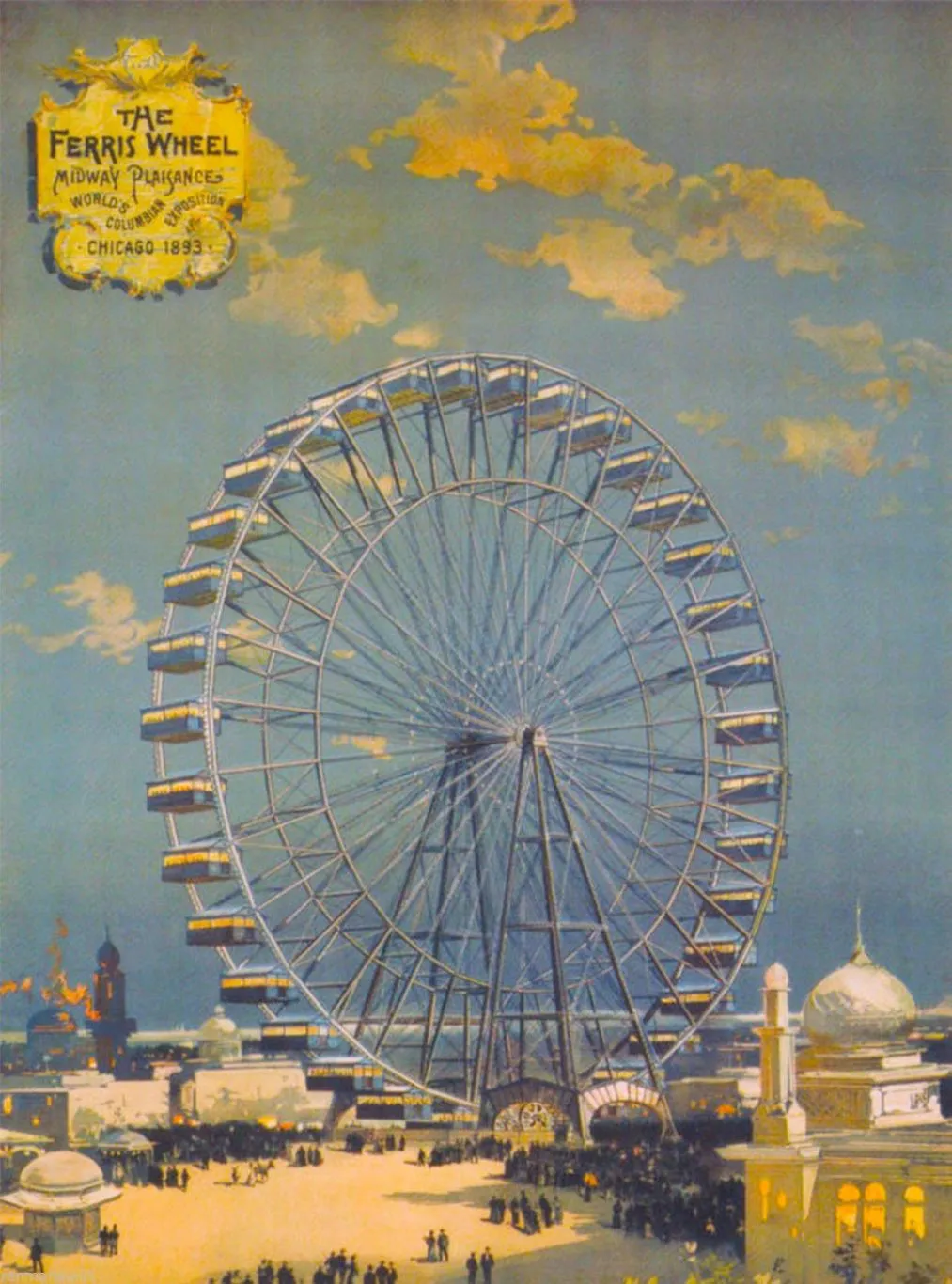
On June the 9th 1893, the first ever Ferris wheel took a test spin…
Reaching a massive 264 feet tall, the wheel was constructed by George Washington Gale Ferris, Jr., a railroad engineer from Illinois, for the 1893 World’s Columbian Exposition in Chicago. The wheel was one of many suggestions put forward to the exposition’s committee to compete with the grandeur of the Eiffel Tower, which had been unveiled during the French Exhibition in 1889.
Initially the committee ridiculed Ferris’ wheel, considering his design to be impossible to build. In fact, a similar “Observation Wheel” was already running in Atlantic City, and had been since 1891. Though this roundabout was much smaller than the one Ferris would go on to build, he admits to having rode it and was likely inspired by it. Built by William Somers and patented in early January 1893, this earlier wheel was a wooden construction built to a height of around 50 feet and carrying only 16 small seats, and more resembles carnival fairground rides than structures like the London Eye. Somers would go on to sue Ferris for idea theft, and although Somers won his case initially, he lost the appeal. Despite this, Somers reputedly went on to have a successful career, where as Ferris would suffer bankruptcy and an early death.


Back in December 1892, however, although they had initially called him “The Man with Wheels in his Head” the exposition’s committee finally granted Ferris the concession to build his wheel. This gave Ferris very little time to get construction of the wheel underway as the exhibition was scheduled to open on 1st May 1893.
In just five short months Ferris raised $600,000 (equivalent to more than $21million by today’s standards) from investors and bought the Ferris Wheel into being. He employed Luther Rice, a fellow engineer, as construction chief and a number of contracts were sent out to precision manufacturers for components for the wheel. After an unusually severe winter, pressurised steam was used to thaw the ground ahead of the construction of the concrete base, and construction began. The wheel was not finished when the exposition opened it’s doors in May, but after trials on the 9th, 11th & 13th June, the second with Ferris’ wife aboard, and the third with members of the press, the wheel opened to public admission on 21st June 1893.
Once completed Ferris’ iron & steel wheel carried 36 cars, was lit by 3000 incandescent bulbs and powered by a 1,000 horsepower reversible steam engine. A second engine was constructed and held as an emergency replacement and each of the cars could carry up to 60 passengers (38 seated) making the total capacity 2,160 passengers. Considering that the World’s Columbian Exposition was the first time that electricity was unveiled to the American public, the whole structure would have made a vastly impressive impact on visitors to the fair. A ride took 20 minutes and cost 50 cents and over 1.4 million people rode the Ferris wheel before the exhibition closed in November.
The Ferris wheel received praise from all quarters. Reporter Robert Graves said “It is an indescribable sensation…that of revolving through such a vast orbit in a bird cage” and the view from the top of the wheel was said to be magnificent. Later in it’s life, 50 marriages would take place on the magnificent structure.


After the exhibition, however, the wheel did not fare so well. After a while, it was moved to a new location in Chicago but there was not the interest there had been and there were far fewer paying customers. In 1903 the wheel was sold for a pitiful sum compared to its construction cost, disassembled and moved to St. Louis for the Louisiana Purchase Exposition of 1904. It was eventually demolished with dynamite in 1906.


Leave a Reply
You must be logged in to post a comment.